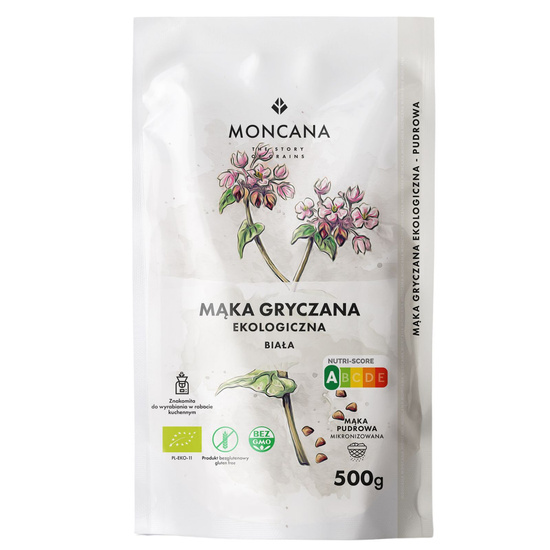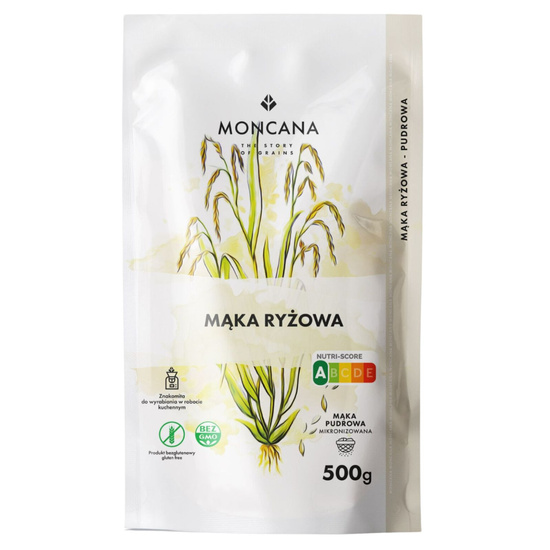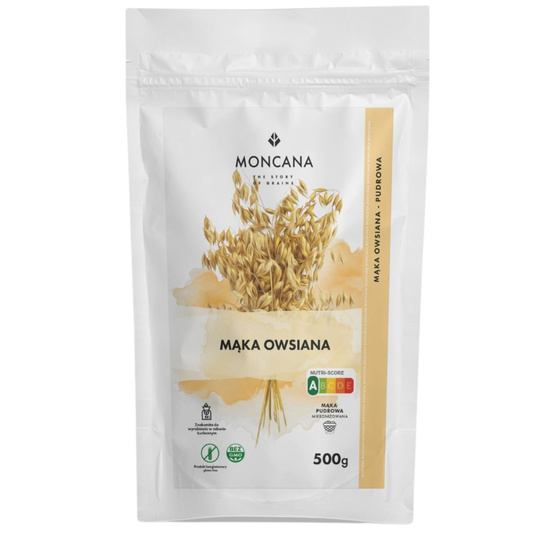Sourdough for gluten-free bread - how to make it?
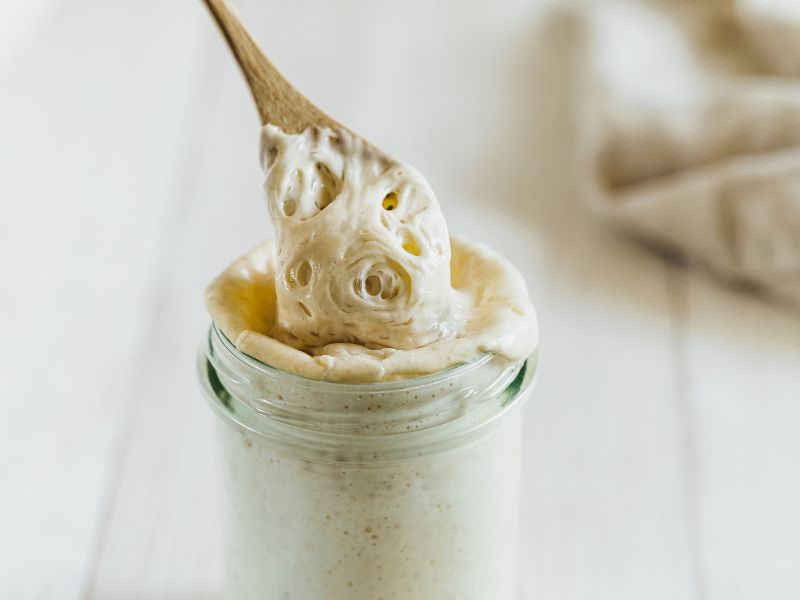
Gluten-free sourdough for bread - how to make it
Preparing a gluten-free sourdough starter may seem daunting, but with the right tips and recipe, it is a task that anyone can make. Baking gluten-free bread on gluten-free sourdough is not only a healthy alternative for people with celiac disease or gluten intolerance, but also a way to get bread with exceptional taste and nutritional qualities.
The sourdough fermentation process makes bread becomes easier to digest, because natural yeast and lactobacilli break down harder-to-digest ingredients. In addition, sourdough fermentation leads to the production of lactic acid, which acts as a natural preservative, prolonging the freshness of bread and preventing mold growth. Gluten-free sourdough bread also has a lower glycemic index, which helps stabilize blood sugar levels and gives you a feeling of satiety for longer.
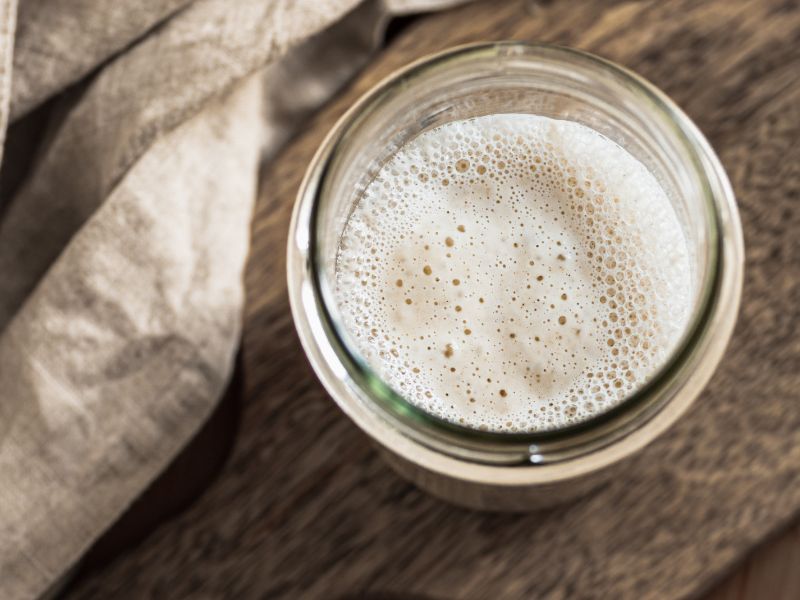
What is sourdough for bread?
Sourdough is a combination of flour, water and natural wild yeast. The formation of a sourdough culture is done through a fermentation process, and the finished sourdough is used as a raising agent in bread baking. Sourdough can have different degrees of acidity, depending on the time of fermentation, it gives the bread a distinctive taste, improves its shelf life and texture.
What I need to set gluten-free bread starter. Ingredients and utensils:
- Flour: choose whole grain gluten-free flour, such as rice flour, buckwheat flour, oat flour, sorghum flour or millet flour. Avoid ready-made gluten-free flour blends, as they contain starches and sticky flours.
- Water: use filtered water to avoid chlorine, which can interfere with fermentation.
- Container: a glass jar with a capacity of about one liter covered with a luff.ÿ with a lid or cloth.
- Kitchen scales: for accurate measurement of ingredients.
- Wooden spoon or whisk.
The following sourdoughs come out nice: sorghum-oat, oat-rice, rice-buckwheat sourdough with a ratio of 50g :50g flour + 100g slightly warm spring water.
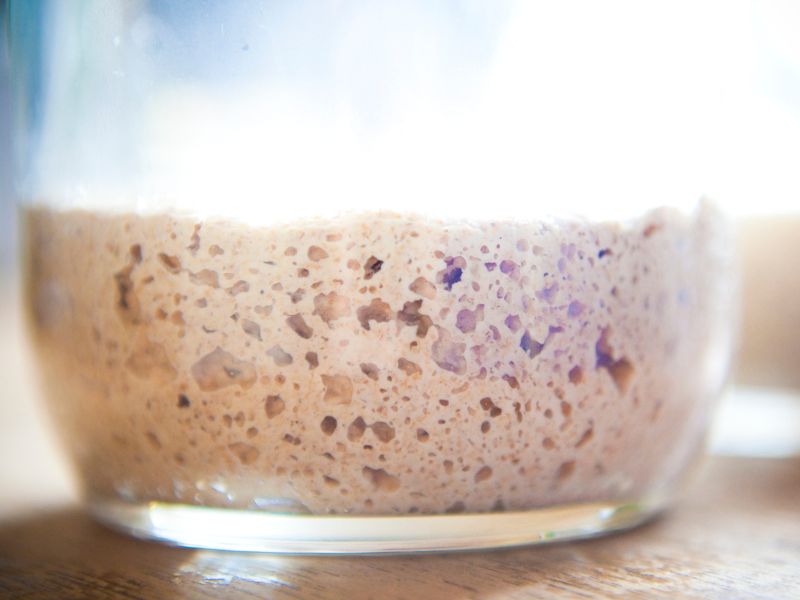
How to make gluten-free sourdough?
- Days 1-2: Feeding twice a day
In the morning, mix 50 g of flour and 50 g of water in a jar. The consistency should resemble a thick paste. Cover loosely and leave in a warm place.
In the evening, add another 50 g of flour and 50 g of water, mix and cover. Repeat for two days.

- Days 3-7: Start discarding the sourdough starter
On the morning of day three, discard all but 100-120 g of sourdough starter. Add 50 g of flour and 50 g of water. Repeat for five days, always discarding excess sourdough before feeding.
You will start to see bubbles and sourdough growth.

- Week 2:
Continue feeding once a day, increasing to 100 g flour and 100 g water. The sourdough starter should already be ready to use when you notice good bubbling and a pleasant, slightly sour smell.

Sourdough Care:
Sourdough can be stored on the counter and fed daily. You can also keep it in the refrigerator by feeding it once a week.
Tips:
- Temperature: sourdough starter ferments best in a warm place (21-24°C). You can use the oven with the light on or place the jar near the radiator.
- Consistency: sourdough should have the consistency of thick yogurt. If it is too runny, add more flour.
- Before baking: if you want to bake bread, take the sourdough starter out of the refrigerator, refeed it and use it when it reaches its peak activity.
Frequently asked questions:
- My gluten-free sourdough does not bubble.
Sometimes a sourdough starter needs more time and heat to start fermenting. You can try adding an apple slice or a few raisins to speed up the process.
- My sourdough does not double in volume.
Sourdough is ready for baking when it begins to double its volume after feeding. Monitor its growth and adjust the temperature if necessary.
- Mold or colored mucus has appeared on the surface of the sourdough starter.
If you notice mold, throw out the starter and start over.
- Liquid has collected on the surface of the sourdough starter.
It is a by-product of fermentation. It can be mixed or poured.
Baking bread on gluten-free sourdough is a healthy and tasty alternative, which can bring a lot of satisfaction. Understanding the basics of fermentation and regularly feeding your sourdough starter is the key to success in baking your own gluten-free bread.

